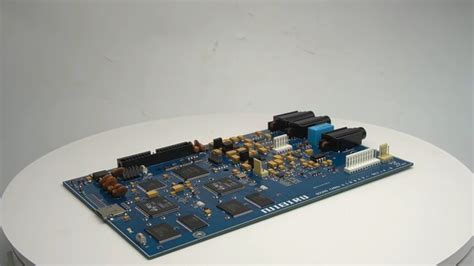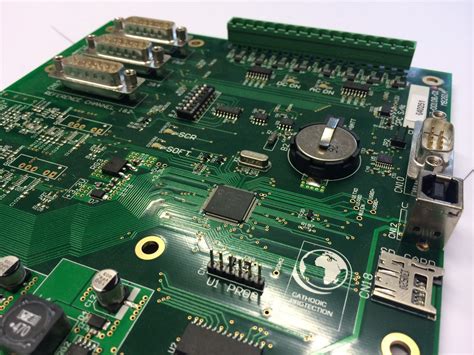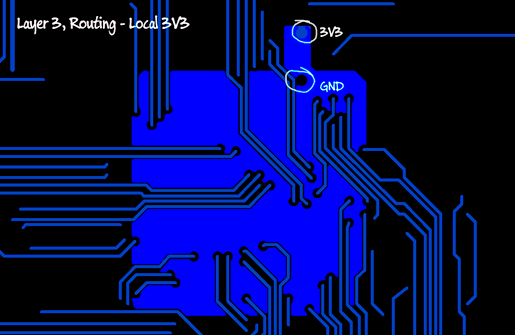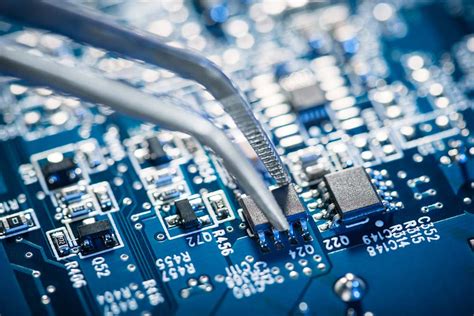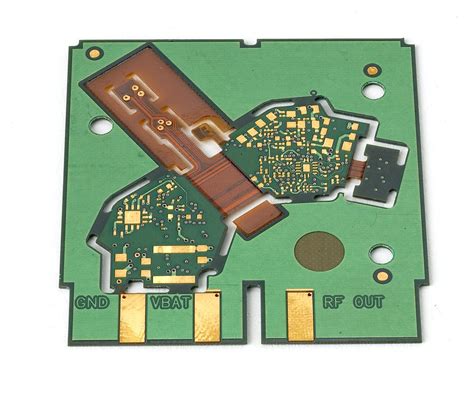Medical PCB Assembly: Precision Standards for Critical Care Technologies
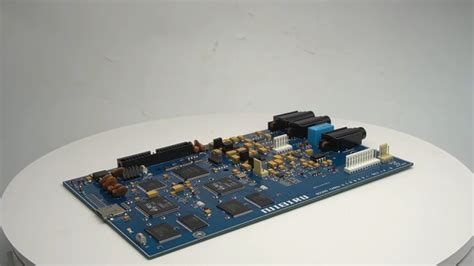
Key Takeaways
The development and implementation of medical PCB assembly processes require adherence to unparalleled precision standards, particularly for technologies deployed in critical care environments. Unlike conventional PCBA, medical-grade assemblies must account for factors such as biocompatibility, sterilization resistance, and long-term operational stability. High-reliability components and multilayer designs are often prioritized to ensure consistent performance in life-saving devices like ventilators, dialysis machines, and implantable neurostimulators.
"A single fault-tolerant design in medical PCB assembly can mean the difference between device efficacy and catastrophic failure in emergency scenarios."
To meet stringent regulatory requirements, manufacturers employ advanced techniques such as automated optical inspection (AOI) and X-ray testing during PCBA production. These steps validate solder joint integrity and component alignment, which are critical for devices operating in high-humidity or high-vibration environments. Additionally, traceability protocols—mandated by standards like ISO 13485—ensure every board can be audited from raw materials to final validation.
Pro Tip: When selecting a medical PCB assembly partner, prioritize vendors with certifications specific to healthcare innovations, such as IEC 60601-1 for electrical safety in medical equipment.
Emerging trends, such as the integration of flexible circuits and miniaturized PCBA modules, are enabling breakthroughs in portable diagnostic tools and wearable patient monitors. However, these advancements demand even tighter tolerances, with some designs requiring sub-10-micron precision for microvia drilling. As healthcare technology evolves, the synergy between fault-tolerant architectures and rigorous testing frameworks will remain central to advancing patient care through reliable electronic systems.
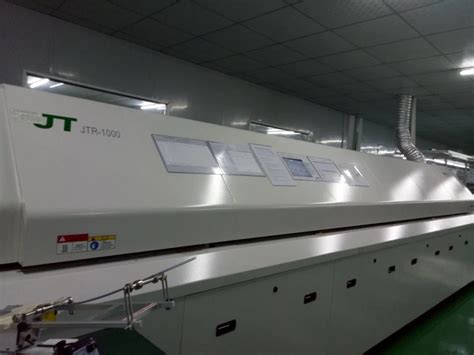
Precision Standards for Medical PCBs
In the realm of medical PCB assembly, precision is not merely a goal—it is a non-negotiable requirement. Medical devices, particularly those used in critical care environments, demand PCBA designs that adhere to micron-level accuracy to ensure flawless functionality. Unlike consumer electronics, where minor deviations might cause temporary inconvenience, a single flaw in a medical-grade PCB could compromise patient safety or disrupt life-saving interventions.
To meet these stringent standards, manufacturers employ advanced techniques such as laser-drilled microvias for high-density interconnects and automated optical inspection (AOI) systems capable of detecting sub-millimeter defects. Material selection also plays a pivotal role: substrates must withstand sterilization cycles, temperature extremes, and prolonged exposure to bodily fluids without degrading. For instance, polyimide-based laminates are often chosen for their thermal stability and flexibility in implantable devices.
PCB assembly processes for medical applications further require traceability at every stage. Compliance with ISO 13485 and IEC 60601 mandates rigorous documentation, from solder paste application to final functional testing. This ensures that every PCBA can be audited against its intended performance parameters, reducing risks in high-stakes clinical scenarios.
Moreover, signal integrity is prioritized in designs supporting diagnostic imaging or real-time monitoring systems. Controlled impedance routing and EMI shielding techniques are integrated to prevent interference that could skew data in devices like ECG monitors or infusion pumps.
Ultimately, the intersection of precision engineering and regulatory rigor defines medical PCB assembly. By aligning cutting-edge PCBA methodologies with uncompromising quality controls, manufacturers uphold the reliability required to advance healthcare innovation while safeguarding human lives.
Medical PCB Compliance for Healthcare
In the realm of healthcare technology, PCB assembly (PCBA) processes must adhere to rigorously defined compliance frameworks to ensure patient safety and device efficacy. Regulatory bodies such as the FDA (U.S. Food and Drug Administration) and ISO 13485 mandate stringent quality controls for medical-grade PCBs, particularly those integrated into life-support systems, diagnostic equipment, and implantable devices. These standards govern every phase of production—from material selection to final validation—ensuring traceability, contamination resistance, and operational consistency under extreme conditions.
A critical aspect of compliance involves aligning PCB assembly protocols with IEC 60601-1, which specifies electrical safety and electromagnetic compatibility (EMC) requirements for medical devices. For instance, PCBA designs for ventilators or infusion pumps must incorporate fail-safe circuitry, redundant power pathways, and isolation barriers to mitigate risks of electrical interference or component failure. Additionally, manufacturers are required to implement risk management systems (per ISO 14971) to identify and address potential flaws in PCB layouts, solder joint integrity, or thermal management during prototyping.
Beyond technical specifications, compliance extends to documentation and audit readiness. Each batch of medical PCBs undergoes rigorous lot traceability procedures, with detailed records of component sourcing, assembly conditions, and testing outcomes. This transparency not only supports post-market surveillance but also accelerates regulatory approvals for next-generation healthcare innovations. By embedding compliance into every layer of PCB assembly, manufacturers bridge the gap between cutting-edge technology and clinical reliability—ensuring that devices perform flawlessly when lives depend on them.
Critical Care PCB Assembly Solutions
In high-stakes medical environments, PCB assembly processes must adhere to uncompromising precision standards to meet the demands of critical care technologies. From defibrillators to patient monitoring systems, PCBA (printed circuit board assembly) serves as the operational backbone of devices where even minor malfunctions can have life-altering consequences. To ensure reliability, manufacturers employ laser-focused protocols, including microscopic solder joint inspections and ultra-precise component placement, often achieving tolerances below 0.1mm.
A defining feature of critical care PCB assembly is its integration of fail-safe redundancies. For instance, multilayer boards with embedded backup circuits are increasingly used in ventilators and infusion pumps to maintain functionality during power fluctuations. These designs align with ISO 13485 and IEC 60601 compliance frameworks, which mandate rigorous testing for electromagnetic compatibility (EMC) and thermal resilience. Advanced PCBA workflows also incorporate hermetic sealing techniques to protect sensitive components from moisture, dust, and chemical exposure in ICU settings.
Material selection plays a pivotal role in enhancing durability. High-reliability substrates like polyimide or ceramic-filled laminates are prioritized for their ability to withstand repeated sterilization cycles and mechanical stress. Additionally, medical PCB assembly leverages automated optical inspection (AOI) and X-ray testing to identify latent defects, ensuring boards meet zero-failure thresholds before deployment.
As critical care technologies evolve, PCB assembly providers are adopting AI-driven analytics to predict component wear and optimize maintenance schedules. This proactive approach not only extends device lifespans but also aligns with the healthcare sector’s shift toward predictive maintenance models. By merging cutting-edge PCBA techniques with stringent quality controls, manufacturers are setting new benchmarks for safety in life-support systems—a foundation that seamlessly supports the next wave of innovations in medical electronics.

PCB Reliability in Life-Saving Devices
The integrity of PCB assembly in medical devices directly impacts patient outcomes, particularly in critical care applications such as defibrillators, infusion pumps, and ventilators. These systems demand zero-tolerance for failure, requiring PCBA designs to adhere to ISO 13485 and IEC 60601 standards, which govern risk management and electrical safety. For instance, multilayer boards used in implantable devices undergo rigorous thermal cycling tests to ensure functionality across -40°C to +85°C ranges, while conformal coatings protect against moisture and chemical exposure in sterilization processes.
| Critical Factor | Design Consideration | Compliance Benchmark |
|---|---|---|
| Signal Integrity | Controlled impedance routing | ±5% tolerance per IPC-6012EM |
| Thermal Management | High-Tg materials (>170°C) | UL 94 V-0 flammability rating |
| Longevity | Gold-plated contacts | 10,000+ mating cycles (per IEC 60512) |
To mitigate latent defects, medical PCB assembly integrates automated optical inspection (AOI) and X-ray testing at multiple stages. For example, cardiac monitors require <0.01% solder joint voiding to prevent intermittent connections during emergency diagnostics. Advanced PCBA workflows also employ traceability protocols, embedding unique QR codes to track component origins—a necessity for FDA 21 CFR Part 11 compliance.
| Failure Mode | Mitigation Strategy | Validation Method |
|---|---|---|
| Delamination | Low-CTE substrates | Thermal shock testing (JEDEC JESD22-A106) |
| Electromigration | Thickened copper traces | HAST (130°C, 85% RH) |
| Signal Crosstalk | Shielding layers | TDR analysis (up to 10 GHz) |
By aligning PCB assembly techniques with failure mode and effects analysis (FMEA) frameworks, manufacturers achieve MTBF (mean time between failures) exceeding 500,000 hours in dialysis machines and MRI control systems—a benchmark that underscores the non-negotiable reliability standards of life-critical healthcare technologies.
Innovations in Medical PCB Technology
Recent advancements in PCB assembly for medical applications are reshaping how critical care technologies are designed and deployed. One of the most transformative developments is the integration of high-density interconnect (HDI) designs, which enable complex circuitry to fit into increasingly compact devices. This innovation is particularly vital for implantable medical tools, such as pacemakers and neurostimulators, where space constraints demand ultra-precise PCBA layouts. Engineers now leverage laser-drilled microvias and stacked copper layers to achieve signal integrity while maintaining biocompatibility with human tissues.
Another breakthrough lies in the adoption of flexible and rigid-flex PCBs, which are revolutionizing wearable medical monitors and disposable diagnostic tools. These substrates withstand repeated bending and sterilization cycles without compromising electrical performance, ensuring reliability in dynamic clinical environments. For instance, smart patches that track patient vitals rely on PCB assembly techniques that embed sensors and wireless communication modules into ultrathin, conformable formats.
Emerging materials also play a pivotal role. Ceramic-based substrates and low-temperature co-fired ceramics (LTCC) are gaining traction for their ability to handle high-frequency signals in imaging equipment like MRI machines. Paired with automated optical inspection (AOI) systems, these materials reduce defect rates in PCBA production, aligning with stringent medical compliance protocols.
Moreover, the rise of IoT-enabled medical devices has driven demand for hybrid PCB assembly processes. Combining traditional rigid boards with stretchable electronics allows seamless data transmission between bedside monitors and centralized healthcare networks. Such innovations not only enhance real-time patient monitoring but also streamline predictive maintenance for life-saving equipment.
As regulatory frameworks evolve, medical PCB technology continues to prioritize traceability and fail-safe performance. From antimicrobial solder masks to embedded self-testing circuits, each advancement underscores the industry’s commitment to merging precision engineering with lifesaving healthcare solutions.
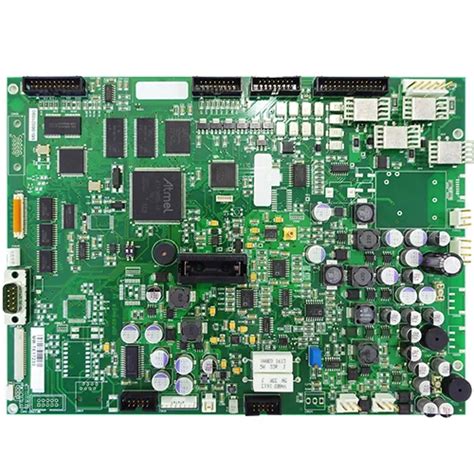
Medical PCB Testing and Validation
Rigorous PCB assembly testing and validation protocols are the backbone of ensuring compliance and reliability in critical care technologies. Unlike conventional electronics, medical-grade PCBA must undergo multilayered verification processes to meet international standards such as ISO 13485 and IEC 60601. These protocols assess everything from thermal resilience under extreme operating conditions to signal integrity in high-frequency diagnostic equipment.
A cornerstone of medical PCB assembly validation is failure mode and effects analysis (FMEA), which systematically identifies potential weaknesses in design or manufacturing. For instance, automated optical inspection (AOI) and X-ray imaging are deployed to detect micro-scale defects like solder bridging or voids that could compromise long-term performance in implantable devices. Environmental stress testing, including thermal cycling and humidity exposure, further ensures boards withstand the demanding environments of emergency rooms or portable healthcare units.
Compliance extends beyond functionality. Regulatory bodies require traceability for every component used in medical PCBA, mandating documentation that tracks materials from sourcing to final integration. Advanced testing platforms now incorporate AI-driven analytics to predict lifespan and optimize maintenance schedules for devices like ventilators or infusion pumps.
Transitioning from prototype to mass production, statistical process control (SPC) tools monitor manufacturing consistency, reducing deviations that might affect batch reliability. This phase often involves accelerated life testing, simulating years of operation within weeks to validate endurance. By integrating these methodologies, manufacturers guarantee that life-saving technologies meet not just technical specifications but the ethical imperative of patient safety.
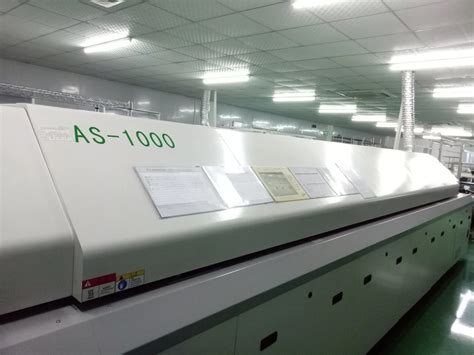
Advancing Healthcare with PCB Tech
The integration of PCB assembly (PCBA) into medical systems has become a cornerstone of modern healthcare innovation. As medical technology evolves toward miniaturization and smart functionality, PCBA processes must align with the rigorous demands of critical care environments. High-density interconnect (HDI) designs, for instance, enable the development of compact yet powerful devices—from portable glucose monitors to implantable cardiac monitors—while maintaining signal integrity in electromagnetically noisy hospital settings.
A defining feature of medical-grade PCB assembly is its adherence to biocompatibility and long-term reliability standards. Materials like polyimide substrates and lead-free solders ensure compatibility with sterilization protocols, while advanced thermal management techniques prevent overheating in continuous-use devices. For example, PCBA in infusion pumps requires precision trace routing to mitigate electromagnetic interference (EMI), safeguarding accurate drug delivery.
Emerging trends, such as IoT-enabled diagnostic tools and AI-driven imaging systems, further underscore the role of PCB assembly in healthcare advancement. Multi-layered rigid-flex PCBs now support wearable health trackers that monitor vital signs in real time, transmitting data to cloud-based platforms for predictive analytics. Meanwhile, advancements in embedded sensor technology within PCBA workflows enhance the responsiveness of ventilators and dialysis machines, directly impacting patient outcomes.
To maintain compliance, manufacturers employ automated optical inspection (AOI) and boundary scan testing during PCB assembly, ensuring zero-defect performance in life-critical applications. These protocols, combined with traceability systems aligned with ISO 13485 standards, guarantee that every PCBA unit meets the exacting requirements of medical device regulations.
As healthcare pivots toward personalized and decentralized care, PCB assembly innovations will continue to drive breakthroughs—enabling smarter, safer, and more interconnected medical solutions that redefine patient care paradigms.
Conclusion
The evolution of PCB assembly in medical technologies underscores the intersection of precision engineering and life-critical applications. As healthcare systems increasingly rely on advanced devices—from implantable monitors to diagnostic imaging systems—the role of medical PCBA becomes irreplaceable. These components must not only meet rigorous compliance standards but also adapt to the dynamic demands of modern healthcare, where milliseconds and microns can determine patient outcomes.
Innovations in medical-grade PCB assembly prioritize materials resistant to sterilization processes, miniaturized layouts for portable devices, and multilayer designs that support complex functionalities. Manufacturers specializing in critical care PCBA employ advanced techniques such as automated optical inspection (AOI) and functional safety testing to ensure boards operate flawlessly under extreme conditions. This meticulous attention to detail is vital for devices like infusion pumps and cardiac defibrillators, where reliability directly impacts clinical efficacy.
Looking ahead, the integration of AI-driven diagnostics and IoT connectivity into medical hardware will further elevate the requirements for PCB reliability. Emerging standards, such as biocompatible coatings for implantable electronics, highlight the industry’s shift toward patient-centric innovation. By aligning PCB assembly practices with evolving regulatory frameworks—including ISO 13485 and IEC 60601—manufacturers can bridge the gap between technological ambition and real-world healthcare challenges.
Ultimately, the future of medical electronics hinges on a delicate balance: advancing PCBA capabilities without compromising the fail-safe principles that define critical care. As engineers and healthcare providers collaborate more closely, the next generation of medical devices will likely harness these advancements to deliver smarter, safer, and more responsive solutions across global health ecosystems.
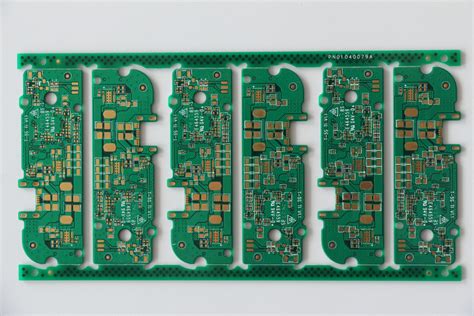
Frequently Asked Questions
What distinguishes medical-grade PCB assembly from standard electronics manufacturing?
Medical PCBA requires adherence to life-critical safety protocols, including ISO 13485 and IEC 60601 compliance. Unlike consumer electronics, these assemblies undergo rigorous testing for reliability in environments with electromagnetic interference, moisture, and temperature fluctuations.
How do manufacturers ensure traceability in medical PCB assembly processes?
Advanced tracking systems document every component’s origin, testing results, and assembly stages. This traceability is mandatory for FDA and CE audits, ensuring accountability if a device requires recalls or updates.
What testing methods validate PCB reliability in life-saving medical devices?
Manufacturers employ accelerated life testing (ALT), thermal cycling, and failure mode analysis to simulate decades of use. For example, defibrillator PCBAs are tested under extreme conditions to guarantee functionality during emergencies.
Can existing PCB assembly designs be adapted for new medical innovations?
Yes, but upgrades often require material enhancements (e.g., biocompatible coatings) and revalidation to meet evolving standards. Iterative prototyping ensures compatibility with technologies like wireless monitoring or AI-driven diagnostics.
Why is PCBA cleanliness critical in medical applications?
Residues from soldering or handling can compromise signal integrity or cause short circuits. Medical-grade assemblies use ultrasonic cleaning and ionic contamination tests to achieve contamination levels below 1.56 μg/cm².
How do regulatory changes impact medical PCB assembly workflows?
Compliance teams continuously monitor updates to standards like RoHS III or MDR. Proactive redesigns and supplier audits minimize disruptions, ensuring devices remain market-ready.
Explore Customized Solutions for Your Medical Device Needs
For tailored PCB assembly strategies that meet critical care standards, visit our medical PCBA services page. Click here to consult with our ISO-certified engineering team.

